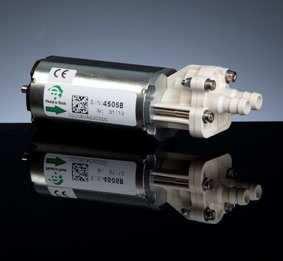Car Clutch Alignment Tools Ensuring Smooth and Efficient Gear Shifting
The clutch is an essential component of a car's manual transmission system, allowing for the smooth engagement and disengagement of power between the engine and the wheels. However, over time, the clutch can become misaligned, resulting in poor gear shifting and potential damage to the transmission system. This is where car clutch alignment tools come into play – specialized equipment designed to correctly align the clutch for optimal performance. In this article, we will explore the various types of car clutch alignment tools, their uses, and how they can help maintain the health of your vehicle.
1. Understanding the Importance of Clutch Alignment

Before delving into the specifics of car clutch alignment tools, it is crucial to understand why proper alignment is essential. A clutch that is not correctly aligned can lead to several issues, including difficulty in shifting gears, excessive wear and tear on the clutch components, and even damage to the transmission system. Improper alignment can also cause vibrations, noises, and loss of power, making for an uncomfortable and unpleasant driving experience. Therefore, regular maintenance and proper alignment of the clutch are crucial for the smooth functioning of a car.
Types of Clutch Misalignment
There are two main types of clutch misalignment – axial and angular. Axial misalignment occurs when the clutch disc is not centered on the flywheel and pressure plate, while angular misalignment happens when the axis of the transmission input shaft is not parallel to the axis of the crankshaft. Both types of misalignment can cause issues with gear shifting and must be addressed promptly to avoid further damage.
Signs of Clutch Misalignment
There are a few tell-tale signs that your car's clutch may be misaligned. These include:
- Difficulty in shifting gears
- Grinding or popping noises when shifting gears
- Vibrations felt through the clutch pedal
- Inconsistent or jerky clutch engagement
- Increased fuel consumption
- Burning smell from the clutch
- Clutch slippage
If you notice any of these signs, it is essential to have your clutch alignment checked and corrected using the appropriate tools.
The Importance of Using Car Clutch Alignment Tools
While some may attempt to align their car's clutch manually, it is a task best left to professionals using specialized tools. Proper alignment can significantly improve the performance and lifespan of the clutch, ensuring smooth gear shifting and preventing costly repairs in the future. Using the right tools also ensures accuracy and precision, avoiding any further damage to the transmission system.
2. Types of Car Clutch Alignment Tools

There are various types of car clutch alignment tools available on the market, each designed for specific vehicles and purposes. Here are five common types of tools used for clutch alignment:
1. Pilot Bearing Pullers
Pilot bearing pullers are used to remove the pilot bearing from the crankshaft when replacing the clutch. This tool works by using a slide hammer to pull the bearing out of its housing. A worn-out or damaged pilot bearing can cause misalignment, leading to issues with gear shifting.
2. Clutch Alignment Tools
Clutch alignment tools, also known as alignment sleeves or mandrels, are used to align the clutch disc to the flywheel and pressure plate. They come in various sizes, depending on the diameter of the clutch and can be used for both axial and angular alignment.
How to Use a Clutch Alignment Tool:
- Install the flywheel and pressure plate onto the vehicle's engine.
- Place the alignment tool into the pilot bearing hole.
- Slide the clutch disc onto the alignment tool, making sure it sits flush against the flywheel.
- Install the pressure plate using the appropriate bolts.
- Remove the alignment tool carefully, making sure not to disturb the clutch disc's position.
3. Dial Indicators
Dial indicators, also known as dial gauges, are used to measure the amount of axial and angular misalignment in the clutch. They have a magnetic base and a movable arm with a needle that indicates any deviations from the proper alignment. This tool is crucial for accurately diagnosing and correcting misalignment issues.
4. Alignment Pins
Alignment pins are small metal pins used to hold the flywheel and pressure plate in place while installing the clutch. They ensure that the components remain aligned during the installation process, reducing the risk of misalignment.
5. Clutch Alignment Tools for Dual Mass Flywheels
Dual mass flywheels are becoming increasingly common in modern cars, and they require specialized tools for proper alignment. These tools work by locking the dual mass flywheel in place and aligning it with the rest of the transmission system.
3. Proper Maintenance for Clutch Alignment

Regular maintenance is essential for the proper functioning and alignment of a car's clutch. Here are some tips to help keep your clutch in top shape:
- Avoid riding the clutch pedal.
- Do not rest your foot on the clutch pedal while driving.
- Check for any leaks in the hydraulic system regularly.
- Use the appropriate transmission fluid for your vehicle.
- Replace the clutch when needed.
- Have your clutch alignment checked by a professional regularly.
FAQs
Q: How often should I have my clutch alignment checked?
A: It is recommended to have your clutch alignment checked at least once a year or every 10,000 miles, whichever comes first.
Q: Can I use any type of alignment tool for my car's clutch?
A: No, it is essential to use the appropriate tool for your specific vehicle to ensure proper alignment.
Q: Can I fix clutch alignment issues myself?
A: While some may attempt to fix misalignment issues themselves, it is recommended to have a professional mechanic do the job using specialized tools.
Q: What are the consequences of driving with a misaligned clutch?
A: Driving with a misaligned clutch can lead to further damage to the transmission system and potential safety hazards.
Q: How can I tell if my car's clutch is misaligned?
A: Signs of clutch misalignment include difficulty in shifting gears, unusual noises, vibrations, and burning smells.
Conclusion
Proper alignment of a car's clutch is crucial for its smooth performance, longevity, and safety. With the various types of car clutch alignment tools available, it is essential to use the appropriate tool for your specific vehicle to ensure accuracy and precision. Regular maintenance and prompt correction of any misalignment issues can help keep your clutch in top shape and prevent costly repairs in the future. So next time you feel your car's gear shifting isn't as smooth as it used to be, remember the importance of clutch alignment and the tools that can help keep it in check.



